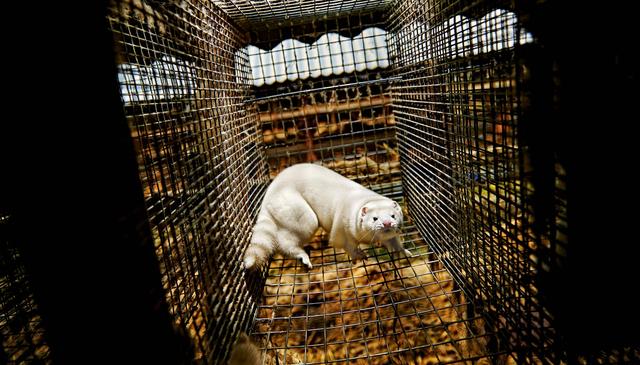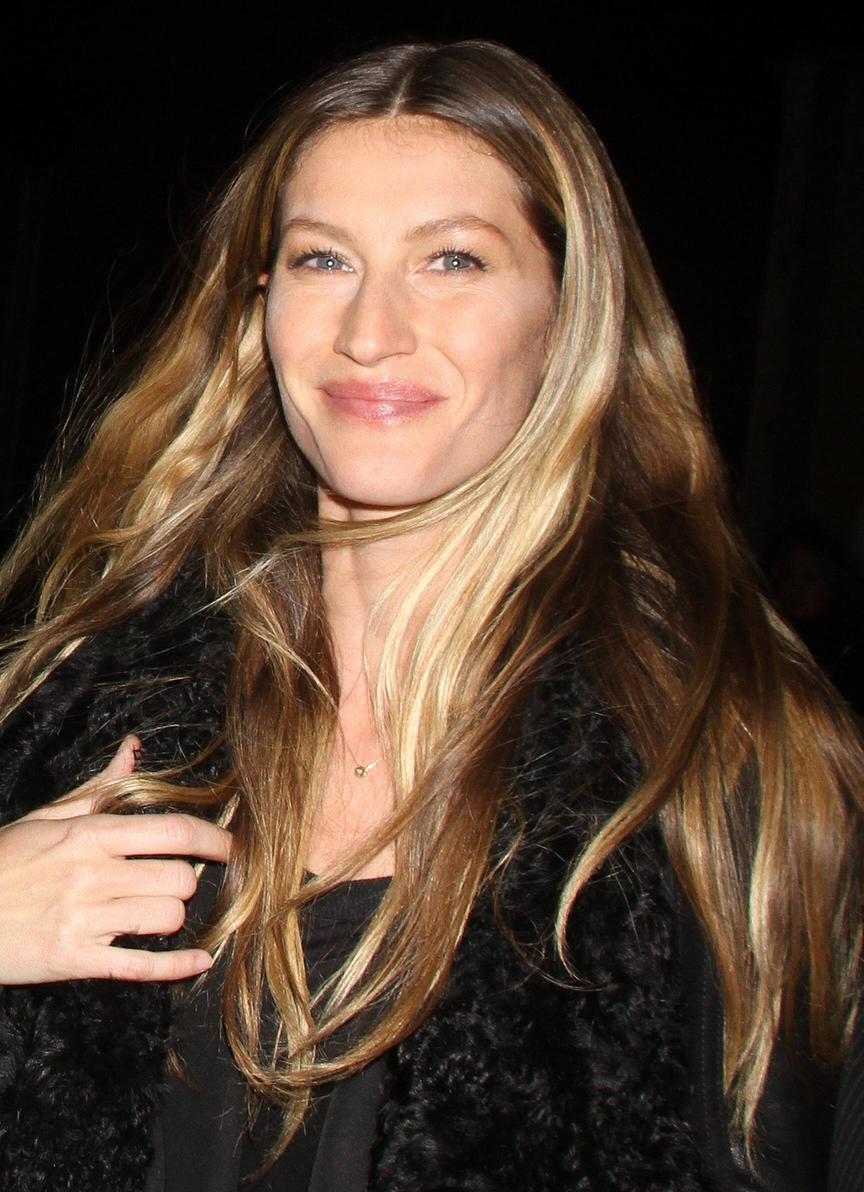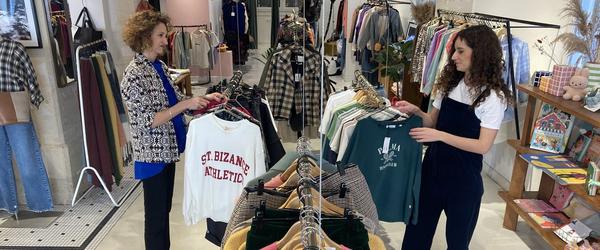The shattering return of the fur
The animal skins are present in nearly two thirds of the parades of the most important female collections of fall-winter 2017.While it was violently criticized in the 1990s, the fur is today a return in force.Our journalist investigated.
On this day in mid-February, he freezes in Pierre Fende.We extract ourselves from a wetland taken by ice over more than 20 cm deep.Bill Mackowski, trapper for sixty years, practices mainly in the north of the state of Maine.He shows me branches of alder pointing through the ice.Beaver, he explains to me, pick up the woods of the poplars from the first cold, before stacking non-edible alders to bend the poplars under the ice and eat them during the winter.The trapper pierces the frozen surface using an iron bar, then widens the hole and pulls on something.A steel instrument bursts the muddy surface - a brutally closed trap on the neck of a huge beaver.
"This is called a super coverage," announces Bill Mackowski.A beautiful beast.The skin will not bring him more than 25 dollars but, on the way back, he displays satisfaction only thousands of generations of hunters and trappers have experienced in front of their catches.He quotes the words of a visitor who came a previous winter: "If people managed to ignore the death of the beavers, they would pay to come here.»»
In reality, ignoring the death of animals no longer seems to be the concern. Des top-modèles ayant posé nues pour une campagne affirmant « Plutôt à poil qu’en fourrure»» font aujourd’hui leur carrière dans la fourrure de mode. Des créateurs qui « avaient peur d’y toucher»» voilà quinze ou vingt ans ont, eux aussi, « brisé le tabou»», m’explique Dan Mullen, un éleveur canadien de visons.
Many actors in the sector today admit that the virulent campaigns of anti-Fourrure activists were right on one point: the living conditions of animals in farms were indecent.He added that trade has changed - what its detractors dispute.In any case, more and more people judge whether or not wearing fur is an individual choice.
The farms dominate the fur market.Their production has more than doubled since the 1990s.In 2015, she reached around 100 million skins - especially a mink, and fox to a lesser extent.The trappers added millions of beavers, coyotes, rats washer, musk rats and other wild animals.Not to mention millions and millions of cattle, lambs, rabbits, ostriches, crocodiles, alligators and caimans, killed both for their meat and their skin.
Formerly attribute of winter bourgeois elegance, fur has become hip-hop and young.It is displayed in any season, in any case: cushions, wallets, keychain, stilettos, sweatshirts, scarves, furniture, lampshades ... There are fur coats with camouflage patterns,of rainbow or worthy of the impossible constructions of M.VS.Sneak.
How did the fur succeed in this resounding return after the ostracism which struck it in the 1990s?After the sinister reputation acquired in the 1960s, when this trade threatened the survival of the leopard, the ocelot and other species?The use of endangered species was prohibited in the 1970s. Mais le renouveau actuel est celui d’un secteur qui a su répondre à ses détracteurs – et, souvent, à se jouer d’eux –, tandis que la demande des nouveaux riches croissait enVShine, enVSorée du Sud et en Russie.
I must admit here that I approach this report with a particular point of view.My great-grandfather was a trapper, and I believe that the intimate knowledge of things brought by hunting, fishing and work with living creatures has largely lost in our urbanized lives.I must add that my wife and I had inherited an ocelotal jacket made up of fifteen skins, which haunted us until we gave it to a fauna reserve like an educational object.So I wanted to go see with my own eyes.
Je roule en pleine tempête de neige vers le nord et la Nouvelle-Écosse, auVSanada, l’un des centres du commerce des peaux.Dan Mullen invited me to see how his visions live.And how they die.

Mullen grew up in the old tradition of vision farming: long and narrow wooden shelters open to the side, with rows of small narrow cages on both sides.When he launched his own business, he opted for wider cages, like those required in Europe.He installed six rows in long stables over 100 m, with a translucent plastic roof.
Several times a day, an employee drives a small vehicle along the aisles, depositing a scientifically developed meal on the roof of each cage (it looks like raw hamburger).Driving out of frost provides water 24 hours a day.Under the cages, a mobile gutter carries the excrement, transformed into fertilizers or electricity in a biodigester (ministerral producing gas).
These changes largely occurred under pressure from the defenders of animal welfare.But breeders have often been able to take advantage of it.For example, Mullen's cages are all equipped with a height shelf which allows the nursing mother to move away from her young (less disturbed mothers raise healthy children).In the cage, toys reduce stress, which would give better quality skins.Paradox: the players in the sector boast of reforms to which their old opponents have forced them.
Dan Mullen's visons are of surprising size and health.They measure double their wild fellows, and have great curious faces.They are nonetheless condemned.I came to see them die.
Employees wear weld gloves to avoid bites.They go from cage to cage, and raise each animal through the base of the tail.A few animals grow strident cries, but most are visibly used to this treatment until they fall through the hinged door of the assigned box like packages in a mailbox.Carbon monoxide makes them lose consciousness in less than sixty seconds.A few minutes later, they died.
"For other species," explains Dan Mullen, animals are often transported by truck over hundreds of kilometers to the slaughterhouse, and it's horrible and bloody.VSe que vous voyez est la forme d’abattage d’animaux d’élevage la moins cruelle.»» Le lendemain, nous visitons l’usine de traitement.Machines remove the skin from each corpse and remove it from a single piece, like a T-shirt.
The largest furs auction in the world is Kopenhagen Fur, in Denmark.A chain made up of robots, radiography devices, imaging technology and humans offers sale 6.8 million skins.Equipped with a barcode linked to the breeder, these have been classified into fifty-two categories, and divided into thousands of lots for auction.In the sales room, buyers consult their catalogs, junk and maneuver to obtain the coveted lots.
Kick is a workshop working for the Kopenhagen Fur.There, Ran Fan, a designer from Beijing, cuts the skin with a lavender color mink.It makes a kind of trellis for a light jacket. « J’adore la fourrure»», dit-elle, au diapason de sa clientèle qui raffole des couleurs vives et des modèles insolites.Chinese consumers buy half of world fur production.
The revival of fur is largely explained by its seduction strategy with young creators like Ran Fan and, by ricochet, with a young clientele.Even though the anti-Fourrure campaigns were in full swing, the major sales rooms decided to call on creators and design students.The goal was to bypass traditional sheaths and specialized rays to make fur a quality fabric like the others, available wherever clothes are sold.
These assiduously cultivated relationships have been paid.The stylists learned to treat the fur in ways that the usual sheaths had never imagined.Thanks to dyeing innovations, it is possible to produce furs in any color likely to be all the rage for a season, from aerial blue to flashy green.The new sewing techniques have also made it possible to manufacture more parts with fewer raw materials.And the fur has become more affordable - a word hitherto rarely associated with pelleterie.
«VSela commence par une jeune consommatrice qui achète un porte-clés en fourrure, explique Julie Maria Iversen, de Kopenhagen Fur.A little later, she may laugh a fur bag.And she will eventually buy a fur coat.The idea is to touch the next generation of women.»»
Que penser de ce renouveau ? La prochaine génération de femmes doit-elle se sentir « touchée»» ? Ou doit-elle s’indigner, comme l’y encouragent les défenseurs des droits des animaux ? Faut-il se féliciter des progrès de l’industrie des peaux dans le bien-être animal ? Ou ces mesures contribuent-elles à « nous aider à mieux accepter l’exploitation des animaux ?»», s’interroge Gary Francione, professeur de droit à l’université Rutgers et partisan de l’arrêt de toute utilisation des animaux par les humains.
Like livestock and breeding poultry, fur animals spend their lives in captivity, then are killed.With methods that few of us would dare to imagine.For example, fox breeders practice anal electrocution, supposedly faster and cace.
Many fur animal farms offer decent conditions on a large scale;But many others do not do it or do not want it.However, the sorting process of an auction means that the skins of the same batch can come from 300 different farms - letters or bad.VS’est un problème pour tout créateur soucieux d’assurer à sa clientèle qu’il respecte des méthodes décentes et durables.
The European fur industry claims that it is working on a solution - a program called Welfur.But its implementation requires beforehand to inspect and note thousands of farms.Steen Henrik Møller, agronomist at the University of Aarhus, participates in the program.I visit with him a Danish vision farm.His inspection is extremely picky.Møller checks the dimensions of the nest boxes fixed in the cages and controls the quantity of straw necessary for the insulation in winter.He examines each animal, the state of the body, the wounds and the existence of movements back and forth, revealing stress.It introduces a langue to see if the animal responds with fear, aggressiveness or curiosity.A visit to the Welfur lasts about six hours to inspect a sampling of 120 cages according to 22 criteria.
"I hope no one will be classified in the worst category, risks the breeder.- I hope that if, replies Steen Henrik Møller, because, if the system does not know how to sort through the breeders, it will not work.»»
However, buyers really feel concerned?"The answer will be very different in Shanghai or Zurich, recognizes Tage Pedersen, president of Kopenhagen Fur.But, in the future, consumers will be more and more vigilant.Not just for fur,
But for everything we buy.In a shop, they will ask if the well-being of the animal has been respected. Et si le vendeur est affirmatif, ils diront : “Comment le savez-vous ?”»» Pedersen estime que le secteur ne pourra s’offrir un système d’inspection que si les acheteurs acceptent de payer un supplément pour le label WelFur.On this point, he is confident.
The animal protection movement has always wanted to ban the use of fur. La Grande-Bretagne, l’Autriche et laVSroatie ont pris des mesures en ce sens ; les Pays-Bas y travaillent.But a ban does not prevent people from bringing fur.Production is delocalized where this prohibition does not apply. Pendant la vente de Kopenhagen Fur, j’ai demandé à un courtier, propriétaire d’un élevage de visons enVShine, si ce pays avait progressé en matière de bien-être animal.The man has tense himself, before launching sharply: "Not much.»»
Prohibiting fur animal breeding does not change anything either to livestock livestock.VS’est s’offrir une bonne conscience à peu de frais.The majority of us have never bought fur and never buy it, and yet eat meat, drinks milk, carries leather shoes and participates in forms of animal exploitation that humans have always practiced- on a scale which, in comparison, makes the industry of marginal fur.
The players in the sector like to castigate the ambient hypocrisy.Almost all observe that other breeders have not had to improve their practices as systematically as they."We knew we were risking the prohibition," said Tage Pedersen.The other breeders had nothing to fear on this side.»»
So here is my idea: instead of prohibiting the production of furs, let's continue to put pressure to prevent bad breeders from harm.Then, let's take the most progressive breeders and the improvements (generalizable, sometimes as profitable) they have brought: confinement of agricultural runs, reduction in stress, best housing for animals, regular inspections to check their well-being.And let us make this progress become the model of all forms of animal production on which our lives depend, for which we have so much respect.








